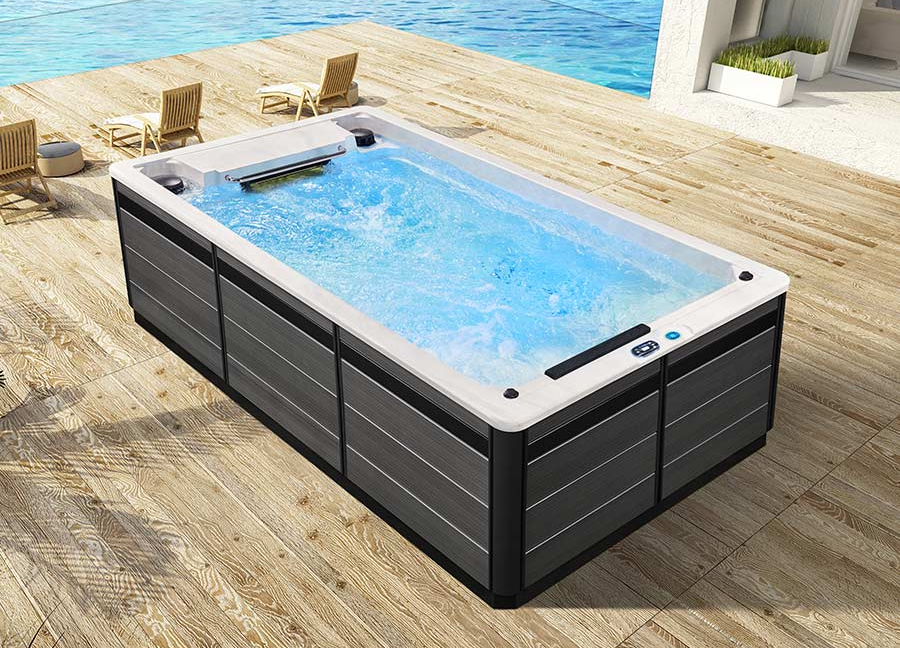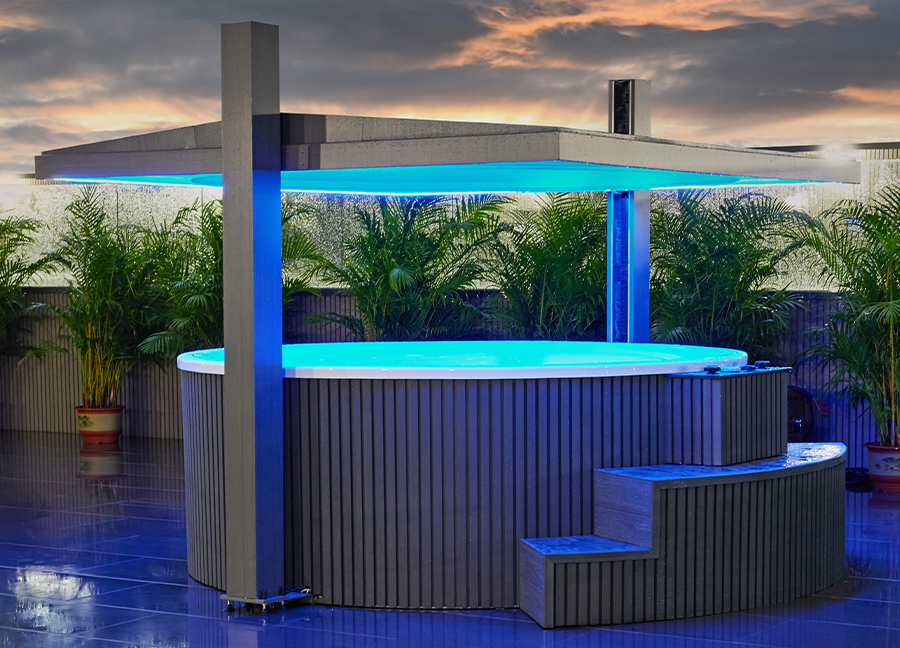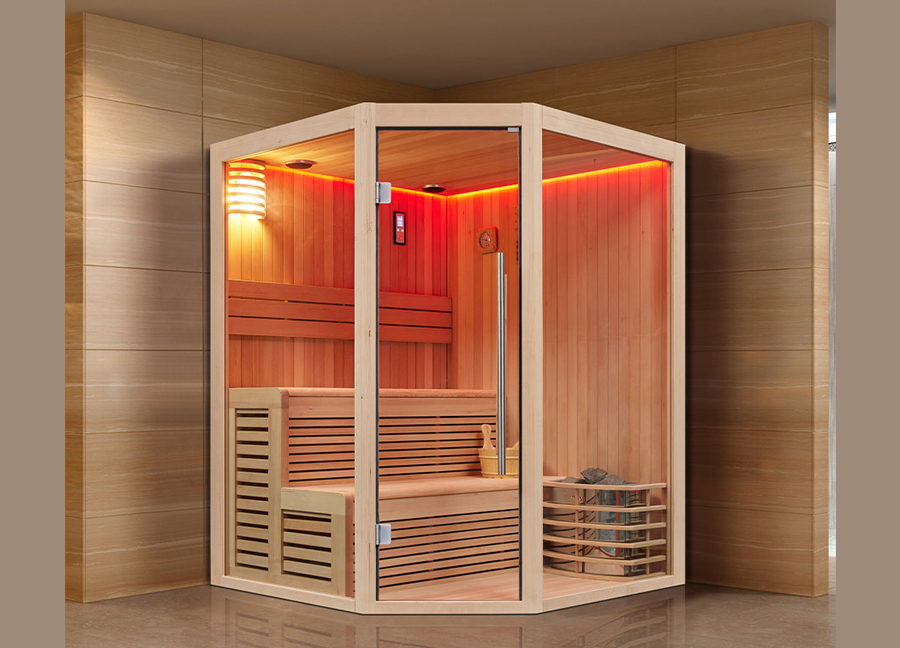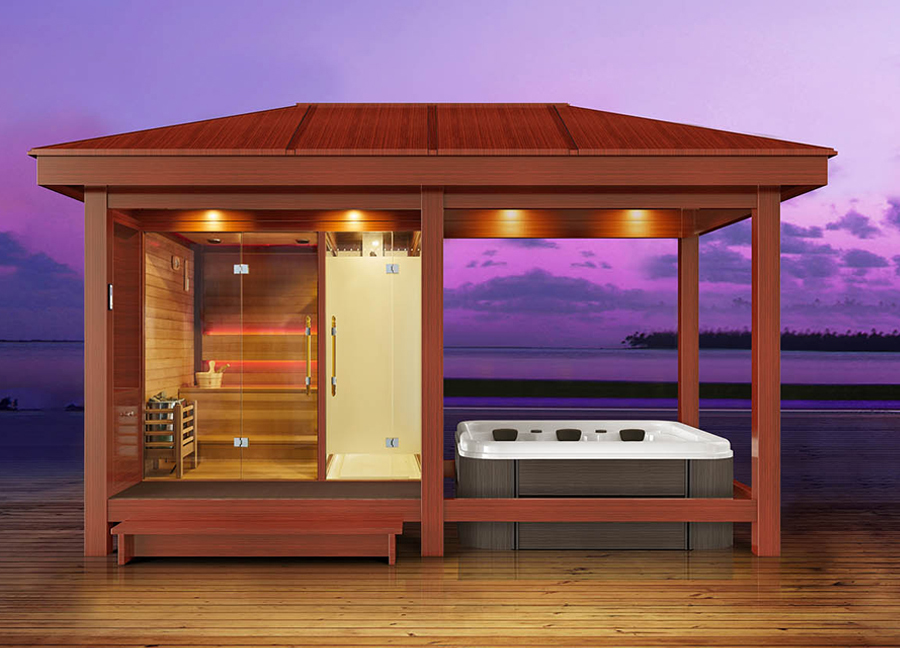With the improvement of living standards, more and more families are choosing to install acrylic massage bathtubs as a key component of relaxation and an enhanced bathroom experience. Acrylic, due to its lightweight texture, diverse shapes, and strong thermal insulation, is widely used in modern bathroom fixtures. The addition of massage functions makes acrylic massage bathtubs even more appealing in terms of practicality and comfort.
However, a frequently discussed question during use is: "Can I use bleach on an acrylic massage bathtub?" This issue not only affects cleaning effectiveness but also concerns the safety of the bathtub's materials, its lifespan, the maintenance of its electrical system, and human health.
Improper cleaning methods can not only damage the acrylic surface but also endanger the electrical system, drainage pipes, and potentially pose health risks.
This article will provide a professional analysis from the following perspectives:
· Material Structure and Performance Characteristics of Acrylic Massage Bathtubs;
· The Chemical Composition and Cleaning Mechanism of Bleach;
· What are the risks of using bleach in acrylic massage bathtubs?;
· How to safely clean an acrylic massage bathtub?;
· Acrylic Massage Bathtub: How to Deal with Stubborn Stains or Mold?;
· Conclusion on Using Bleach on Acrylic Massage Bathtubs.
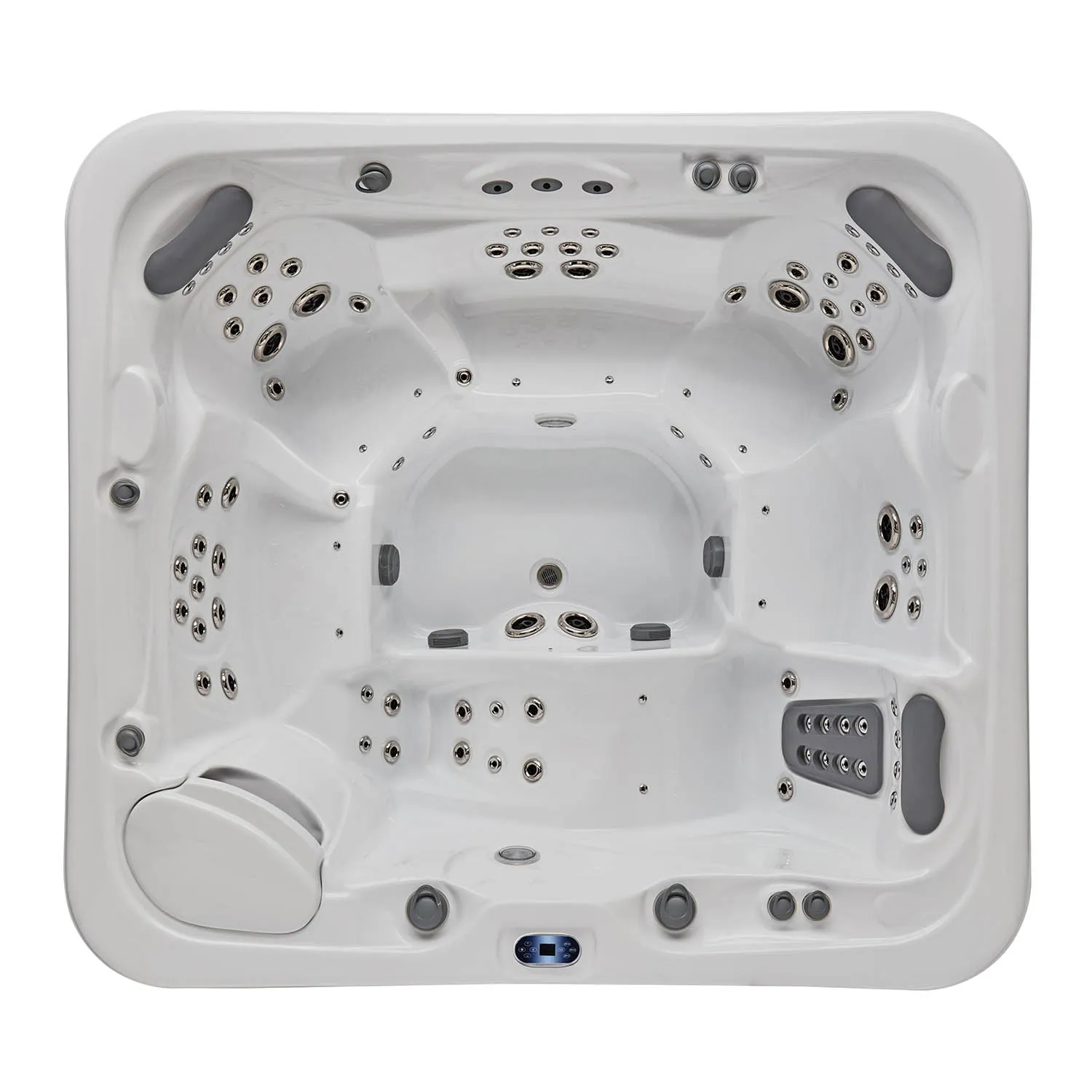
Material Structure and Performance Characteristics of Acrylic Massage Bathtubs
1. What is Acrylic?
Acrylic, chemically known as polymethyl methacrylate (PMMA), is a thermoplastic commonly used in high-end bathroom products. It offers the following advantages:
· Smooth Surface: Acrylic has a smooth, soft feel and visually transparent appearance.
· Good plasticity: Acrylic can be formed into various complex shapes when heated.
· Corrosion Resistance: Resistant to most mildly corrosive chemicals.
· Good thermal insulation: Retains water temperature better than metal bathtubs.
· Easy Cleaning: The surface is dense and resists dirt.
2. Structural Characteristics of Acrylic Massage Bathtubs
A typical acrylic massage bathtub consists of the following components:
· Acrylic shell: Carries the water and the user, and its surface must remain smooth and polished over time.
· Embedded piping system: Provides air bubbles and hydromassage.
· Water and air pump system: Drives the massage water and bubbles.
· Heating and electrical control system: Enhances the user experience but is sensitive to humidity and chemicals.
These components form a delicate and relatively fragile system, especially the acrylic housing and electrical components. Careful attention must be paid to the choice of chemical cleaning agents used.
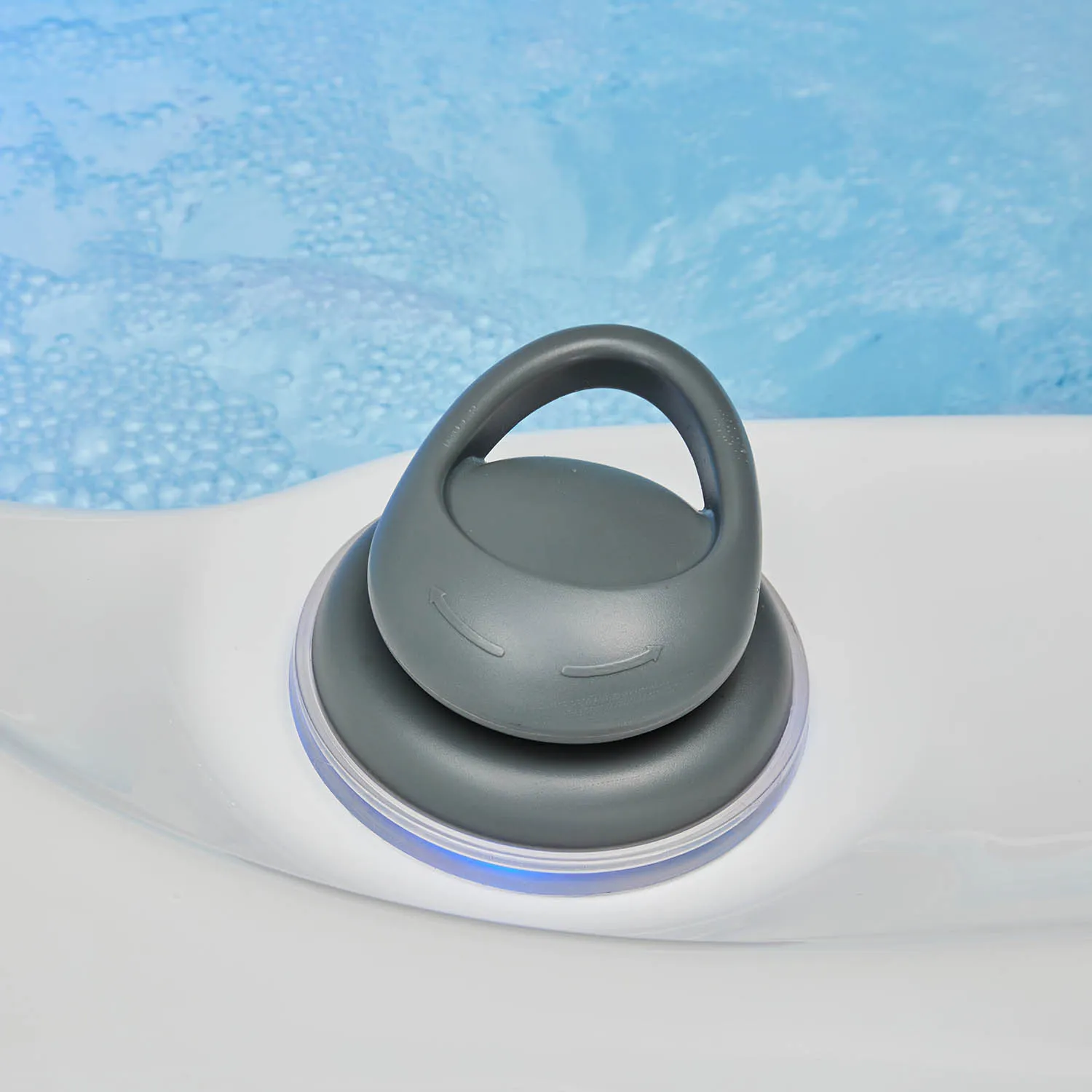
The Chemical Composition and Cleaning Mechanism of Bleach
1. Common Types of Bleach
Common household bleaching agents on the market include the following:
· Sodium hypochlorite (NaClO) bleach: Commonly found in household liquid bleach, it is a strong oxidizing agent.
· Hydrogen peroxide (H₂O₂) bleach: It has moderate oxidizing power, a mild chlorine-free odor.
· Chlorine-releasing effervescent tablets: Contain a chlorine stabilizer that releases active chlorine in water.
· Oxygen-based bleach (sodium percarbonate): It primarily releases active oxygen and is more environmentally friendly.
Among these, sodium hypochlorite bleach is the most widely used, but also the most corrosive, potentially damaging metal fittings, plastics, seals, and other items.
2. Mechanism of Action of Bleach
The main functions of bleach include:
· Oxidation and decomposition of colored organic molecules, causing them to fade;
· Kill bacteria and viruses, making it particularly suitable for disinfection and cleaning;
· Decompose mold and remove dark spots common in humid environments;
· Remove odors by neutralizing odor-causing substances through oxidation.
However, these mechanisms of action require high compatibility with the materials used. Bleach is relatively friendly to ceramic and stainless steel, but it can cause significant damage to polymer materials such as acrylic.
What are the risks of using bleach in acrylic massage bathtubs?
1. Surface Corrosion and Yellowing
Although acrylic is resistant to most cleaning agents, it is still sensitive to strong oxidizing agents (such as sodium hypochlorite). Frequent use of bleach may cause:
· Deterioration of surface gloss;
· Discoloration to yellowing or graying;
· Gradual brittleness of the material structure.
2. Damage to the Pump System and Seals
Acrylic massage bathtubs contain multiple electrical and hydraulic components, such as:
· Pipe seals;
· Electric pump impeller;
· Inlet and outlet valves.
These components are often made of rubber, silicone, or plastic. The active chlorine in bleach can disrupt their molecular structure, causing leaks or malfunctions.
3. Potential Hazards of Electronic Control Components
Some acrylic massage bathtub users may mix bleach into the water and run the massage system for a "circulation clean." This practice is highly discouraged:
· Bleach vapors may corrode the electronic control panel;
· Residual active substances may damage the pump's interior;
· Electrochemical reactions with metal parts may cause rust.
4. Secondary Irritation to the Body
If bleach residue is not thoroughly rinsed, reusing the bathtub may cause:
· Skin irritation;
· Eye irritation;
· Respiratory discomfort;
This is particularly harmful to infants, young children, and those with sensitive skin.
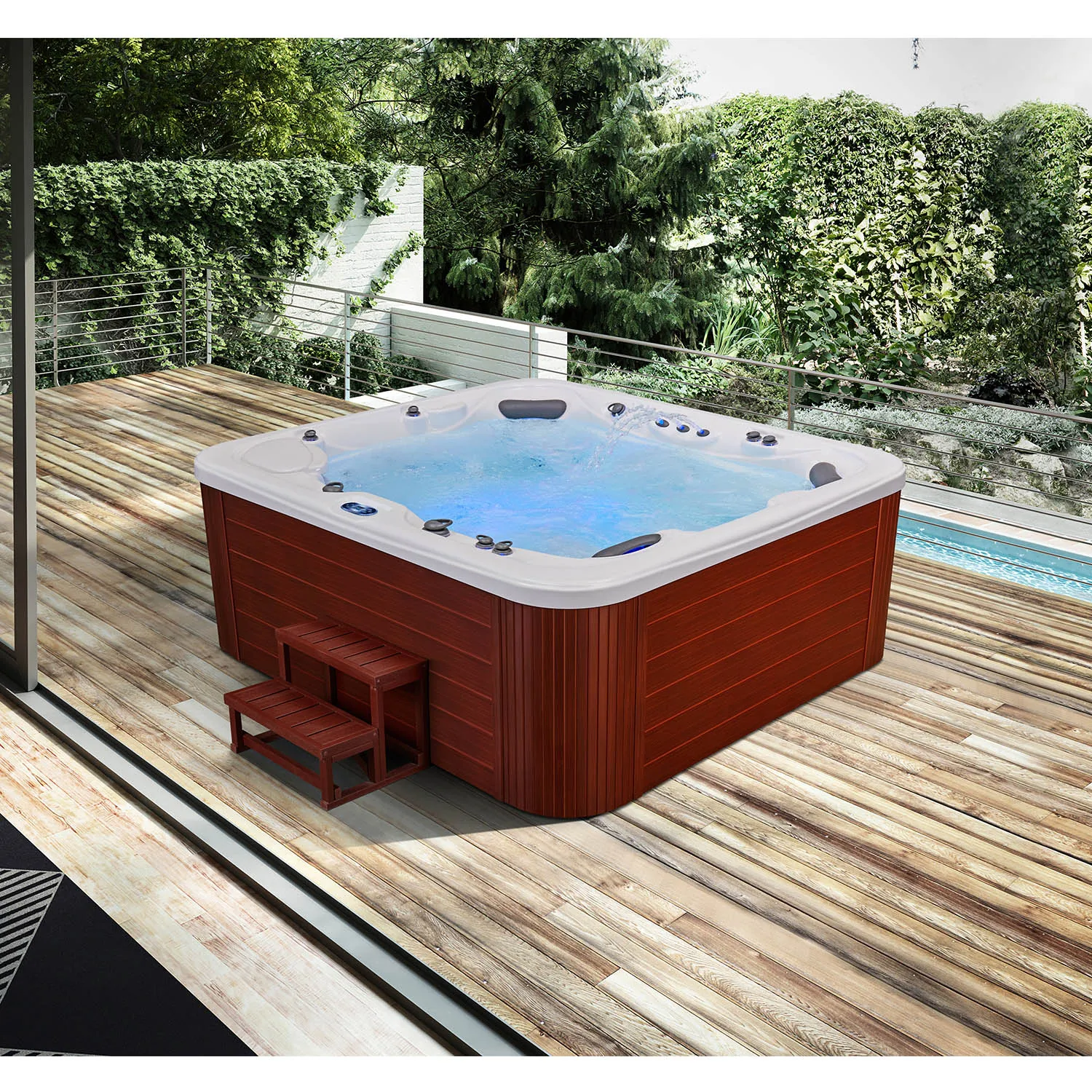
How to safely clean an acrylic massage bathtub?
1. Recommended Safe Cleaning Methods
To avoid damaging acrylic and its components, the following cleaning methods are recommended:
Cleaning Method | Ingredients | Frequency of Use | Precautions |
| Mild neutral detergent | Bathtub cleaner with a pH of approximately 7 | 1-2 times a week | Do not use products containing chlorine or abrasive particles |
| White vinegar and water solution | White vinegar and water in a 1:3 ratio | Once a month | For removing light scale or plaque |
| Baking soda paste | Mixing baking soda and water into a paste | Spot cleansing | Wipe with a soft cloth, never steel wool |
| Specialized acrylic cleaner | Certified acrylic surface care product | Once a quarter | Restores gloss and extends life |
2. Recommended Cleaning Procedures
· Turn off the power;
· Drain the tub and wipe away any water stains;
· Clean with a soft sponge and the recommended cleaning agent;
· Rinse thoroughly 3-5 times to ensure no residue remains;
· Dry the surface and allow the tub to air dry.
Acrylic Massage Bathtub: How to Deal with Stubborn Stains or Mold?
For stubborn areas, such as small mold spots around the edges of the massage jets and around the drain, if conventional cleaning is difficult to remove, the following methods can be used:
1. Use a foaming cleaner containing oxygen-based bleach (labeled for acrylic);
2. Sprinkle baking soda on a damp cloth, gently press the affected area, wait for 10 minutes, and then wipe;
3. Disassemble and clean the jets separately, using a soft-bristled toothbrush to remove dirt from the edges and crevices.
Avoid using concentrated sodium hypochlorite for soaking or recirculating rinses just to get rid of any stains quickly!
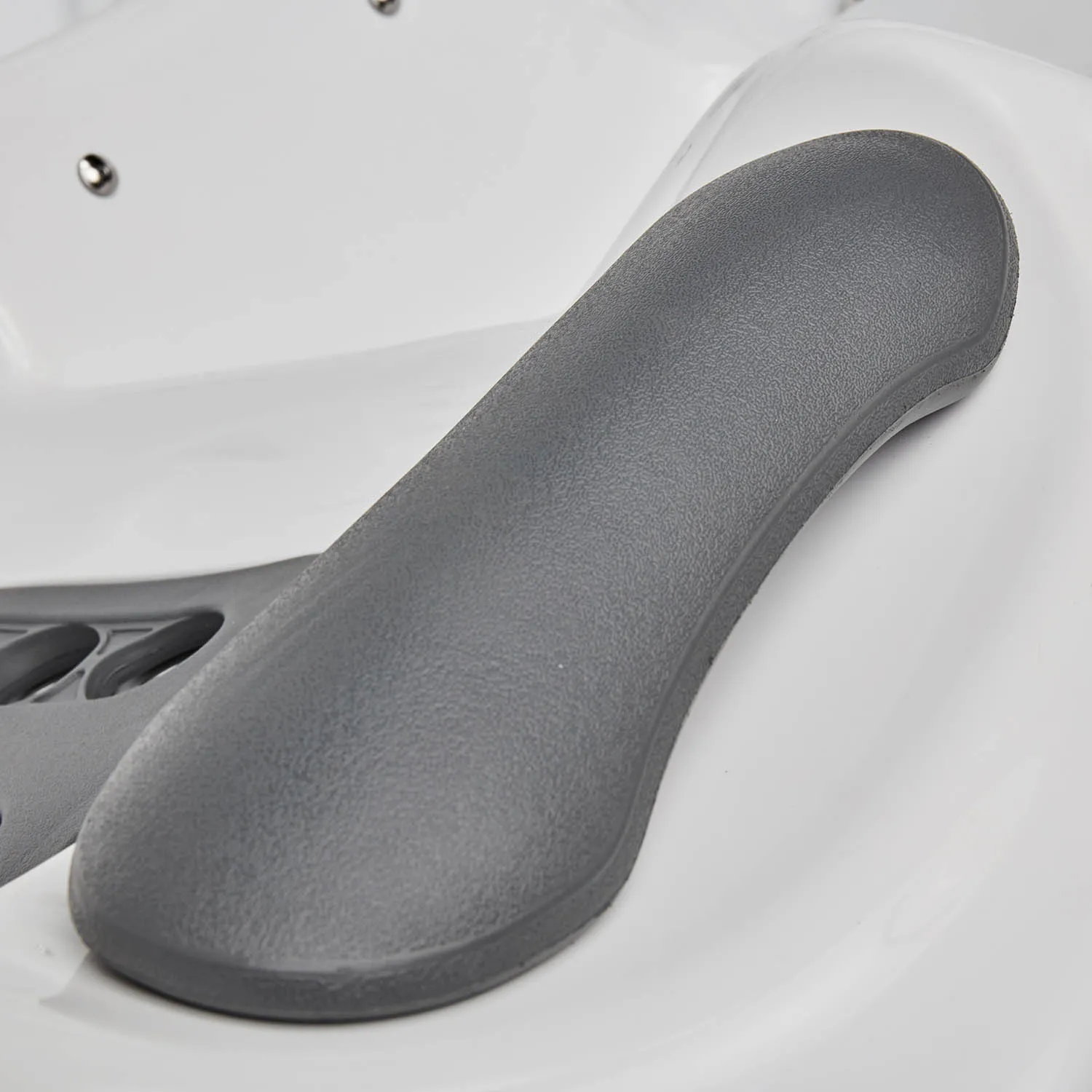
Conclusion on Using Bleach on Acrylic Massage Bathtubs
Based on the above professional analysis, we can reach a clear conclusion:
— Traditional chlorine-based bleach is not recommended for use on acrylic massage bathtubs!
The main reasons include:
1. Corrosion, tarnishing, and discoloration of the acrylic massage bathtub surface;
2. Damage to the electronic control system and seals;
3. Potential irritation or harm to the human body;
4. A variety of safe and effective alternative cleaning solutions are available on the market that fully meet daily cleaning needs.
To ensure the long-term safety of your acrylic massage bathtub, every user should keep the following precautions in mind:
✅ Use pH-neutral cleaning products;
✅ Disconnect the power supply and drain the water before cleaning;
✅ Dry the surface after each use to prevent moisture and bacteria from growing;
✅ Clean the internal circulation system at least once a month;
❌ Do not use steel wool, strong acids, strong alkalis, or chlorine-based bleach;
❌ Do not use the bathtub as a pet or tool trough;
❌ Do not add any chemical solutions to the circulation system while the bathtub is powered on.
What Quality Certifications Do Your Products Hold?
All MEXDA products—including outdoor gazebos, spa hot tub, sauna rooms, and steam bathrooms—have passed rigorous national and international testing. We are certified by ISO9001:2015 and hold CE (EU), SAA (Australia), and ETL (USA) approvals. We’ve also obtained 60+ R&D patents. As a certified high-tech enterprise, our factory follows strict quality control protocols from raw materials to packaging. This ensures your purchasing experience is safe, reliable, and backed by verified standards.

